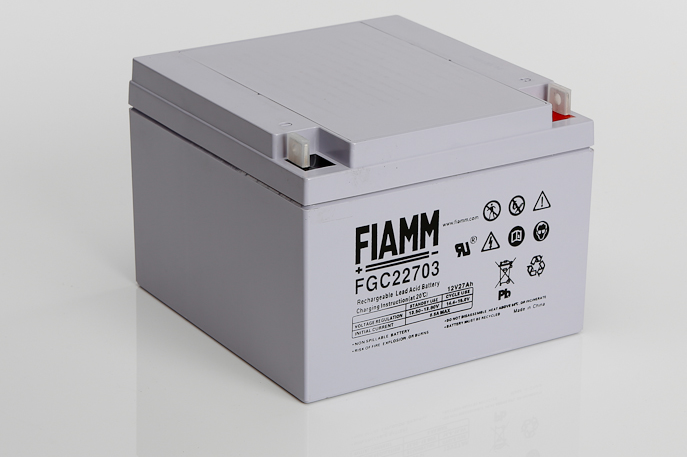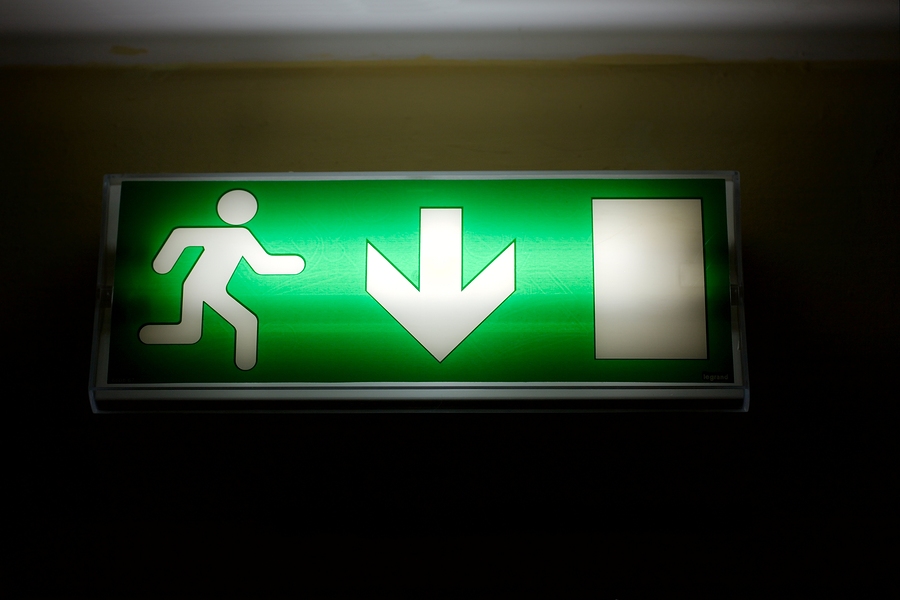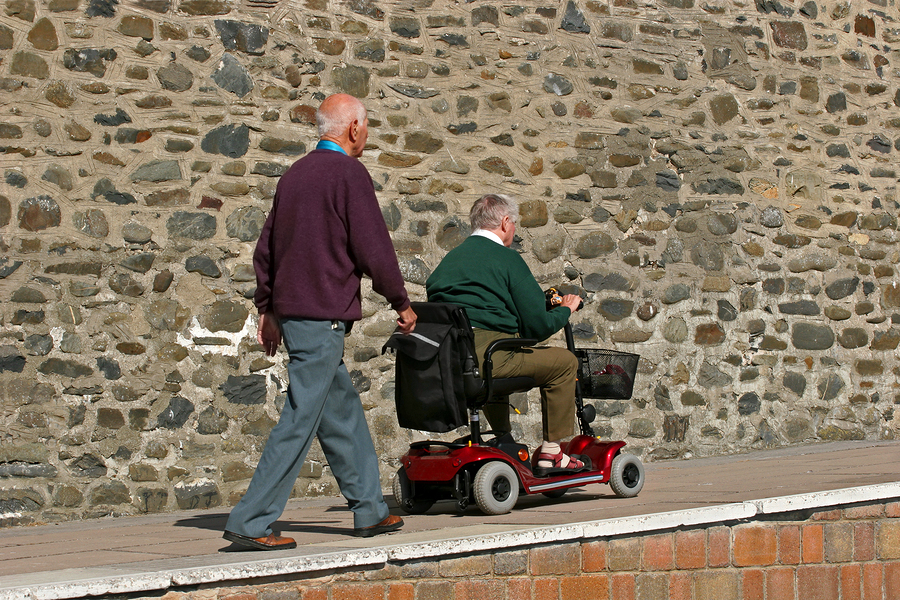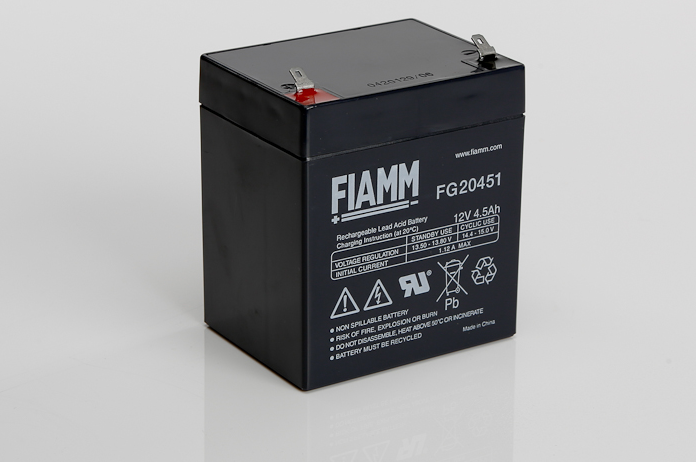
Due to the technological advancements made over the past 150 years, the battery can be found in a multitude of different applications today.
The essential function of each of these batteries, regardless of their size, shape, and chemical components, is to create power - and this in turn makes our lives a lot easier. So, amongst all of the different types, what is it that makes the lead acid design so popular?
Proven technologyFirst invented in 1859 by a French physician named Gaston Planté, the lead acid battery has come on leaps and bounds since its inception.
It was the first rechargeable battery for commercial use and today it can be found in a number of everyday items – such as toys, mobility equipment, starting applications, emergency lighting and UPS systems.
The technology has constantly evolved and been reinforced to become stronger and reliable than ever before, which is just one of the reasons why you’ll get optimum power with a lead acid battery.
Mass produced = affordableAlongside the fact that this type of battery is reliable and durable, it’s also mass produced too, which means that it’s affordable.
As this style of battery has many functions in the modern world, more than just a handful of them need to be manufactured.
Combining strength and long-lasting power with a design that’s affordable to produce and purchase makes the lead acid battery even more beneficial and efficient.
Low self-dischargeWhen you buy a battery, you want one that’s going to retain power and last a long time without having to charge it more often than not.
The lead acid battery fits into this category as it has a low self-discharge rate and is one of the lowest available in rechargeable battery systems.
This means that after a full charge, you will get the power you need for a substantial amount of time compared to other battery types available.
100% recyclableOn top of the physical power of the battery, this design also has an environmental advantage in that it’s 100 percent recyclable.
So, when your battery finally does come to an end, it can be recycled and put to good use in the future – maybe even to make another new battery!
Low maintenanceFinally, the sealed lead acid battery is low maintenance and doesn’t require any water top ups or electrolyte to fill.
Once it’s charged and added to your application or device, you can leave it alone and let it give you the power you need without having to worry about any additional upkeep.
It really is one of the best batteries around and thanks to history, development, and science it’s certainly made our lives a lot easier to manage.
Purchasing a lead acid batteryRemember, with a lead acid battery you will get premium power.
For more information please visit the batteries page on the Blue Box Batteries website.
Should you need further help or assistance finding the lead acid battery you require, please contact us directly.

Lawnmowers are extremely convenient machines when it comes to cutting the grass, but don’t forget they’re also great for racing around on a dirt track too.
If you’ve never tried lawnmower racing before then you’re missing out. It’s great fun! If you want to get involved then take a look at the following Blue Box Batteries guide, where we explore the history of lawnmower racing and take a look at how you can become part of this incredible, action-packed sport.
Let’s raceSo when and where did it all begin? 1973 is the answer, when the sport was independently invented by an Irishman named Jim Gavin and his friends in a pub near Horsham, West Sussex.
The premise of the sport was to act as an alternative to mainstream and expensive motorsports with no sponsorship, cash prizes, or modifications to the engines. Remarkably, the same principles and rules that were created in 1973 still stand today.
Since the inception of the British Lawn Mower Racing Association (BLMRA) there are now roughly 250 active members. The BLMRA hosts 12 races throughout the year, which take place from May to October. Some of these races include The British Championship, The World Championships, and the popular 12 Hour Endurance Race too.
Of course the mowers themselves (usually either ride-on or self-propelled) are modified by having the blades removed for safety reasons and the sport today attracts people from all backgrounds and ages.
Getting startedSo with a brief history out of the way, if you want to partake in this sport, how do you go about getting involved?
First of all, if you’re swaying to the idea of jumping on a lawnmower and racing around, it’s advised to visit a local event to see if you think it would be worth taking part.
If you like what you see, your next step is to become a member of the BLMRA by either signing up online or filling in the relevant forms. Once complete, you will receive a handbook, newsletter and a membership card.
After reading the handbook and choosing a race group, you’ll need to find a mower that you would like to race in, before making sure that it’s homologated (inspected and approved to race). The reason lawnmowers need to be homologated is so they adhere to the rules and to also ensure that a level playing field is set for all competitors.
The process to carry out the above requires you to get in touch with the BLMRA and arrange a date and time for you to take it to them to be inspected.
After the lawnmower has been approved you can take it away and carry out your build. The mower will also need to be inspected for a second time before you begin you can start racing.
What else do you need?Besides the lawnmower (it would be a little tricky without this of course) you will also need the correct clothing, a safety helmet, and goggles if you will be using an open faced style helmet, as well as gloves for driving.
Most people choose to wear protective motocross clothing with extra layers of body armour for added safety, so if you don’t have this, it’s well worth investing in. Lastly, you will need to buy or hire a transponder and a clip so that times can be measured and recorded during races.
With registration, all of the gear and the relevant checks carried out, you’ll be ready to take part in your first lawnmower race.
When are races held?The best way to see which races/events are taking place and when they are is to look at the Events category on the British Lawn Mower Racing Association website.
Here, you will be able to view a calendar of all upcoming races in addition to looking back through the archives at previous results and winners.
Best of luck in your lawnmower racing adventures, we’ve no doubt that when you start racing you’ll wonder why you didn’t take this sport up earlier on in your life.
Remember too that if you need a new battery for your lawnmower for racing (or for simply cutting the lawn at home) we stock an extensive range here at Blue Box Batteries.
Visit our lawnmower batteries page or feel free to contact us directly for more information.
Sources British Lawn Mower Racing AssociationLawnmower image from Bigstock.

Motorbikes are powerful, fast and impressive machines, but which individual components actually make up this vehicle?
To find out, take a look at the latest Blue Box Batteries Infographic and view an in-depth explanation of the main areas, as well as discovering a few bike facts along the way.
Embed this Infographic on your website:
Source: Blue Box Batteries

In commercial buildings, such as hotels, offices, student halls of residence and hospitals, emergency lighting should be put in place to ensure that during an emergency, occupants can find their way out of the premises via the nearest exit.
These lighting systems will illuminate a safe exit route from the building to a sufficient level during events such as an office fire or a power outage and will be reliant on battery power.
Depending on the size of the premises or choice of emergency lighting system, the battery will either be located as a single unit (known as a static inverter emergency lighting system) which powers the whole building, or via individual batteries. The individual batteries will be found in each emergency lighting strip or sign and are often referred to as ‘single point emergency lighting’.
Carrying out regular checksIn the modern world, health and safety regulations are arguably stricter than ever before.
So in order to keep your building maintained and to adhere to the required regulations, it’s advised to carry out frequent checks on your emergency lighting systems.
It’s likely that thorough checks will need to be carried out by a qualified professional, but it’s still worth keeping an eye out to observe if any obvious faults are present. Remember that ultimately, it’s people’s safety that you’re looking out for should a situation occur that requires the emergency lighting to work properly.
One way to determine if everything is in working order is to see if single lighting units or the whole premises are not operating as well as they should be.
This quick observation can be as simple as walking around the building and looking to see that all lights and signs aren’t flickering and are lit up correctly.
Need a new battery?If at any stage you notice that your emergency lighting is not operating properly then it may be time for a new battery.
In this scenario, you’ll need to speak to a professional battery supplier to ensure that all areas of the premises comply with BS EN standards and have been sized to meet these requirements.
The battery type you require will depend on the system implemented and can be a valve regulated lead acid (VRLA) design, nickel cadmium (NICD) or Nickel Metal Hydride (NiMh) chemistry type – all are ideal for long duration back up power.
For more information, please visit our emergency lighting batteries page to view our full range of reliable products from top brands.
Alternatively, please contact Blue Box Batteries today to ask for professional assistance - we’ll be more than happy to help you find the battery you need.
Emergency lighting image from Bigstock.

Like any method of transport in life, it’s a privilege to actually be able to get from A to B without fuss. From the car and the motorbike, to the moped and mobility scooter, each vehicle has made our lives easier as we can travel whenever we desire.
So in order for your mobility scooter to last that extra mile (no pun intended) it’s important to keep it well maintained and carry out checks on a regular basis.
With this in mind and to help you get started, take a look at these top maintenance tips from the team here at Blue Box Batteries.
1. Charging and checking the batteryAs one of the most fundamental parts of your vehicle, the battery will supply your mobility scooter with the power you need to get to your destination.
Over time, the ability of the battery to hold charge will decrease and you’ll start to notice that more frequent charges will be required.
Always make sure that you have enough charge for the length of the journey you are about to undertake. Remember too that travelling uphill and using your lights will consume more battery power than usual. Charging times will also vary depending on make and model, so it’s best to consult the owner’s manual to see how long a full charge is supposed to take.
Check the battery for any wear and tear and if you notice any damage, or a significant reduction in its ability after a full charge, it may be time to get yourself a new battery.
For more information on replacing and installing mobility scooter batteries, check out our handy slideshare guide below.
A Guide to Replacing and Installing Mobility Scooter Batteries from BlueboxBatteries 2. Brake!To avoid accidents and injury, it’s equally as important to check that your brakes are operating properly before you set off.
When testing the brakes, sit on your scooter and drive a few meters on a flat surface before applying the brakes lightly. Avoid doing this on a slope – in the rare event that the brakes aren’t working at all, you’ll start to gather speed without the ability to stop.
If you notice that the braking system seems weak or it isn’t as smooth as it’s been in the past, speak to a professional technician.
It’s also advised to get your brakes serviced once a year to make sure they’re working properly and to keep both you and pedestrians safe.
3. Tyre pressure and qualityWith all that travelling and momentum, it’s no wonder that mobility scooter tyres are subject to general wear and tear.
Similar to a car, if your mobility scooter tyres have become worn down, it will be much more difficult to slow down and come to a stop. Check the owner’s manual to determine the right tyre pressure and look at the tyres to see if any of them are too flat and need to be pumped up.
Another factor to consider is the tyre tread – the grooves in the tyre that grip the scooter to the road. If these have become too worn then they will need replacing. Worn down wheels will require extra time to come to a stop when braking, especially in wetter conditions.
Therefore, get in the habit of checking your tyres twice a year and if you don’t know what you’re looking for, get them checked by an expert to make sure nothing’s been missed.
4. The seatIt’s likely that your mobility scooter features a detachable seat, so check that it’s securely in place before you hit the road.
This is easy enough to do and will require minimal time. Before you head off, simply give the seat a firm wiggle to see if it moves.
If it does then it will need to be tightened so that you can travel safely in comfort without worrying about the possibility of falling off and causing yourself injury.
5. A quick test driveIf you’ve not been out on your mobility scooter for a while, before you go out on it again, spend a few minutes test driving it to check that all is in working order.
Check the steering capabilities, lights, horn, brakes and acceleration. If you notice that any areas are underperforming then this could put a halt to your journey.
For example, if your lights don’t work, travelling in the dark isn’t going to be the most sensible option.
It’s better to find this out beforehand by giving your mobility scooter a quick test drive compared to leaving it too late - so make these quick checks first.
More mobility scooter adviceThanks for reading the Blue Box Batteries guide to mobility scooter maintenance. Remember, it’s easy to carry out the above checks and in doing so you will be protecting your own safety and the safety of other pedestrians. Furthermore, you will also determine that your mobility scooter is classed as roadworthy.
For more information on mobility scooters, check out the Blue Box Batteries blog as well as our Facebook and Twitter profiles.
Mobility scooter image from Bigstock.

Batteries are an integral part of lives. Wherever you go, and whatever you're doing, there are likely to be batteries in operation within a few feet of where you’re stranding.
Of course, there are some obvious examples, such as those in mobile phones and laptops. However, there are many other batteries that operate almost undetected, and some that provide back-up power in the event of a major failure of electricity supply. There are also many battery sizes on the market that are used to power different types of equipment.
So, with this in mind here’s a quick Blue Box Batteries guide to just some of the different types of batteries that you can purchase.
Small Sealed Lead Acid BatterySmall sealed lead acid batteries, otherwise known as an SSLA battery, usually come in 6V or 12V form. Other voltages do exist but are less common.
The SSLA battery is constructed of multiple lead plates connected together and immersed in a sulphuric acid solution. The acid is held in place against the plates via an absorbed glass mat material known as AGM. Using this process, 2V cells are formed. These cells are then connected to form battery blocks.
These batteries are for the best part sealed, with exception to a one way valve which allows gas to escape in the event of accidental overcharging. They can also be fully operated when positioned on their side.
SSLA batteries have a hugely successful design and can be found in every day equipment. Examples of this include single point emergency lighting, fire alarms, mobility scooters, desktop uninterruptible power supplies (UPS), parking meters, and a whole host of applications where a power source is required when mains electricity is not available.
PROS: Affordable technology, 100% recyclable, standard fitment sizes.
CONS: Can be heavy when compared to the equipment they are installed in, sensitive to temperatures.
Valve Regulated Lead Acid BatteryUsing the same chemistry as the small sealed lead acid batteries, valve regulated lead acid batteries (VRLA) are larger than their SSLA counterparts.
These batteries are able to cope with large high current applications and are commonly found in applications such as mid to large UPS, static inverter emergency lighting, large alarm systems and telecommunications equipment.
These products come in a wide range of power ratings and various fitment sizes and can be connected in series and parallel to form a battery system to suit the particular needs of the equipment that they’re being installed into.
VRLA batteries have become the most commonly used battery type for standby equipment, providing backup power to offices, data centres and manufacturing plants in the event of power outage.
In terms of shape and size, most VRLA batteries have a top terminal arrangement with a positive and negative terminal situated on each end of the battery. However there are exceptions in the form of front terminal batteries, which originated from the telecoms industry, where batteries were required to fit a standard 19” rack system.
Front terminal batteries are very narrow, generally sized so that 4 x 12V blocs can be fitted in series to form a 48V battery string in a single row. This then fits a 19” telecoms rack, where the terminals are fitted to the narrow front end of the battery to enable connection in the system without reaching over the battery as you would do with a standard top terminal battery version.
Not only do front terminal batteries have an advantage in terms of fitment in these systems, but the placement of the terminals makes ongoing maintenance much more convenient and safe as voltage measurements can be taken quickly and simply.
Whilst originally designed for telecoms applications, the advantages of front terminal batteries are more often used today in other standby power applications too. PROS: High current capacity, low maintenance, reliable and proven technology, 100% recyclable.
CONS: Heavy, sensitive to ambient temperatures.
Gel BatteryGel batteries are very similar to AGM batteries as above, though the electrolyte is suspended in gel silica rather than absorbed glass matt.
Due to the nature of these batteries, when compared to AGM they can boast greater resistance to vibration, shock and temperature extremes. As a result, they can commonly be found in motorised applications, such as boats and vehicles. They are also considered superior for deep discharge applications and were originally popular for using in mobility scooters, however improvements in AGM, including cyclic capacity and affordability have made this much less so over recent years.
PROS: Deep discharge capacity, high tolerance to vibration.
CONS: Expensive, can be sensitive to overcharging.
Nickel Cadmium BatteryNickel cadmium batteries, also known as NiCd or NiCad batteries are a popular form of rechargeable batteries and can be found in a large variety of shapes and sizes.
As implied in the name, the chemical construction of this battery consists of nickel oxide, hydroxide and metallic cadmium. These batteries are highly cyclic, providing in excess of 500 cycles and are commonly found in power tools, emergency lighting (both single point and in older inverter units). Nowadays however these are being replaced by newer technologies, such as Nickel Metal Hydride and Lithium due to their superior cyclic capacities and because they suffer less ‘memory effect’ compared to NiCad.
In terms of standby equipment, NiCad batteries were once very popular for heavy industrial use and some larger products provided a very high service life (around 20 – 25 years). However, this is now largely being phased out in favour of VRLA batteries which provide cost savings and provide a much more environmentally friendly solution against Nicad. NiCad batteries can still be found in old emergency lighting inverter units.
PROS: Long lasting, tolerates deep discharge.
CONS: Not environmentally friendly, improved technologies available for many applications.
Lithium BatteryLithium batteries offer the benefit of good cyclic capacity together with being very light. This type of battery is normally found in low power applications, such as phones, laptops and other computer equipment. Over recent years the technology has improved and can also be found in mobility applications such as electric bikes, golfing equipment and small end mobility scooters.
The main disadvantage to using lithium batteries is that the technology is still quite expensive when compared to other solutions, though hopefully as demand continues this will improve over time.
PROS: Very light, good cyclic capacity.
CONS: Expensive, can be difficult to transport in large quantities.
More InformationThanks for taking the time to read our guide on the different battery types. We hope you’ve learnt something and it’s proven to be useful.
Remember that batteries come in a range of different sizes, shapes and volts for a whole host of different purposes. If you do require further information then please contact Blue Box Batteries today.
Latest Headlines
Bulk Orders
Discounted prices are available for bulk orders, please contact us to discuss your requirement.